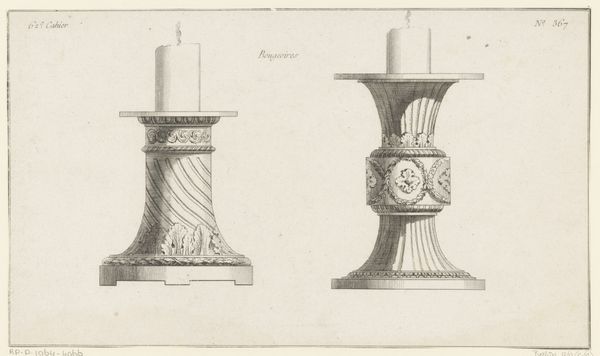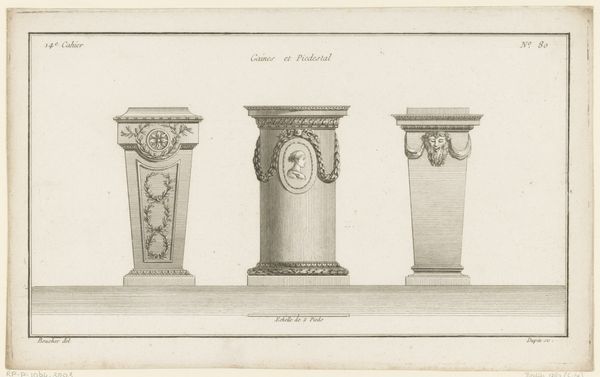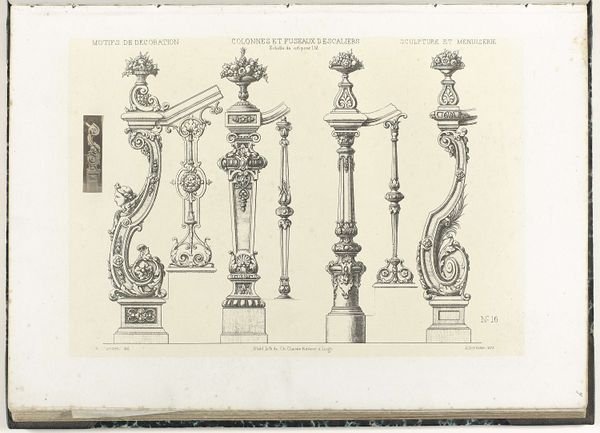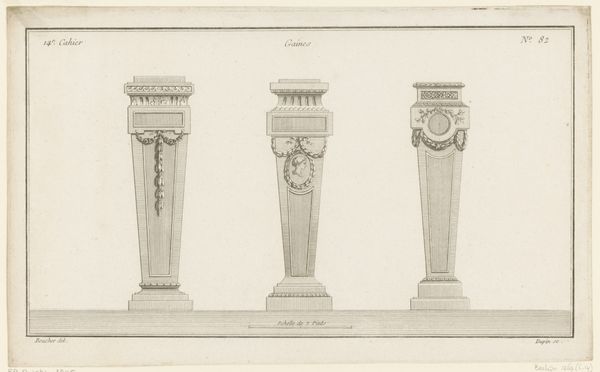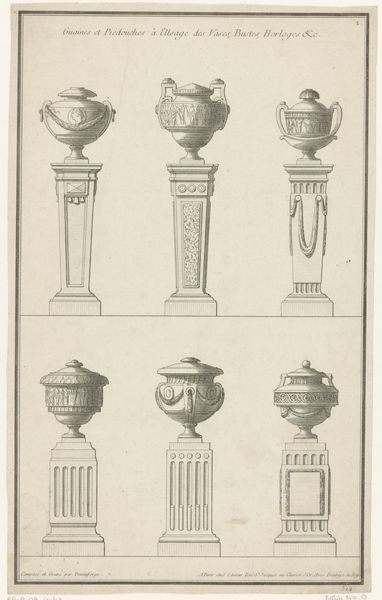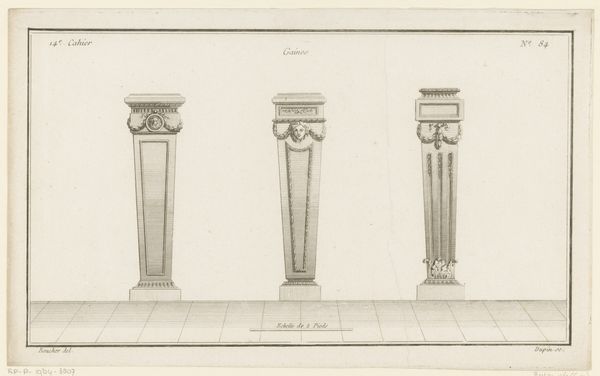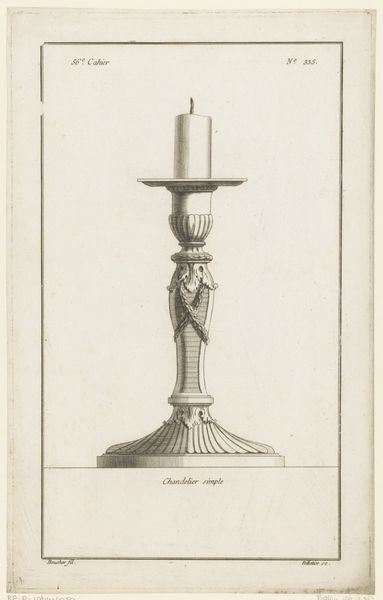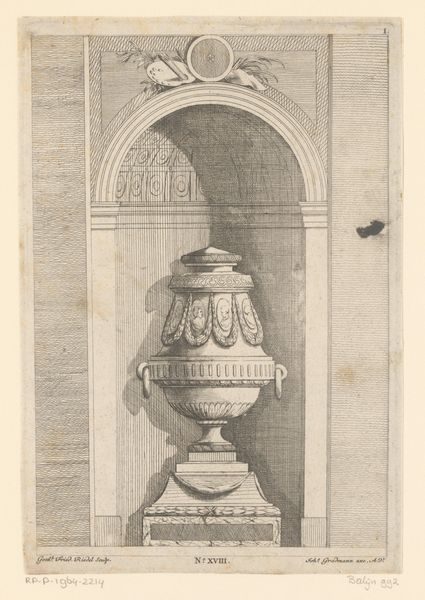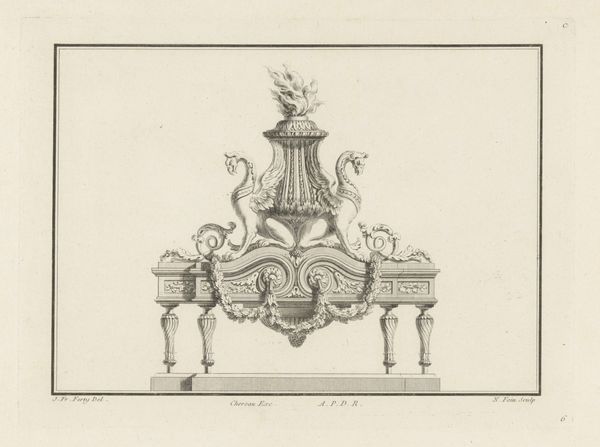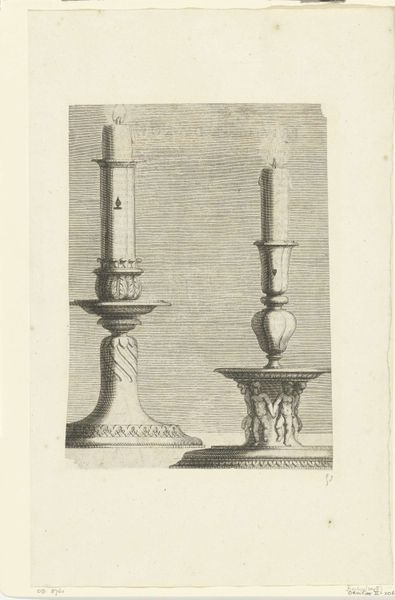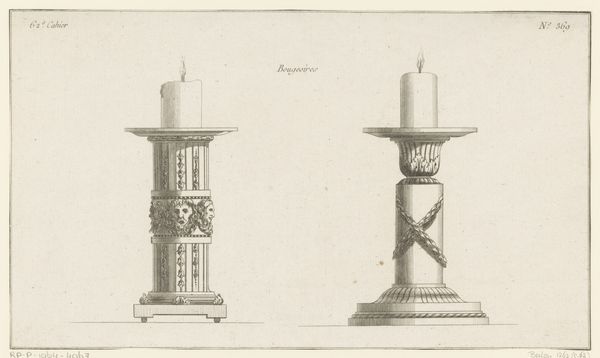
drawing, print, paper, pencil
#
drawing
#
neoclacissism
# print
#
paper
#
form
#
geometric
#
pencil
#
line
#
decorative-art
Dimensions: 13 3/8 x 21 1/8 in. (34 x 53.7 cm)
Copyright: Public Domain
Here we see Henri Auguste’s "Three Designs for Candlesticks," rendered in ink, exuding the neoclassical taste prevalent at the time. Note the sphinx-like figures adorning one design, their presence a nod to the Egyptomania sweeping Europe. These figures, evocative of ancient wisdom and guardianship, are not merely decorative. Consider how such motifs recur throughout history. In ancient Egypt, the Sphinx guarded sacred spaces, embodying royal power and divine protection. These symbols resurfaced during the Renaissance and neoclassical revivals, charged with new yet connected meanings, reflecting a fascination with antiquity and a quest for cultural legitimacy. Observe also the female figures, reminiscent of classical caryatids. These architectural supports, often depicted as draped women, transform a structural element into a figure of grace and strength. This act of borrowing from the past is no mere imitation. It's a cultural re-enactment, echoing and amplifying the symbolic power embedded within these forms. In this context, the viewer experiences the cyclical progression of symbols, their emotional and psychological weight undiminished by time.
Comments
No comments
Be the first to comment and join the conversation on the ultimate creative platform.
